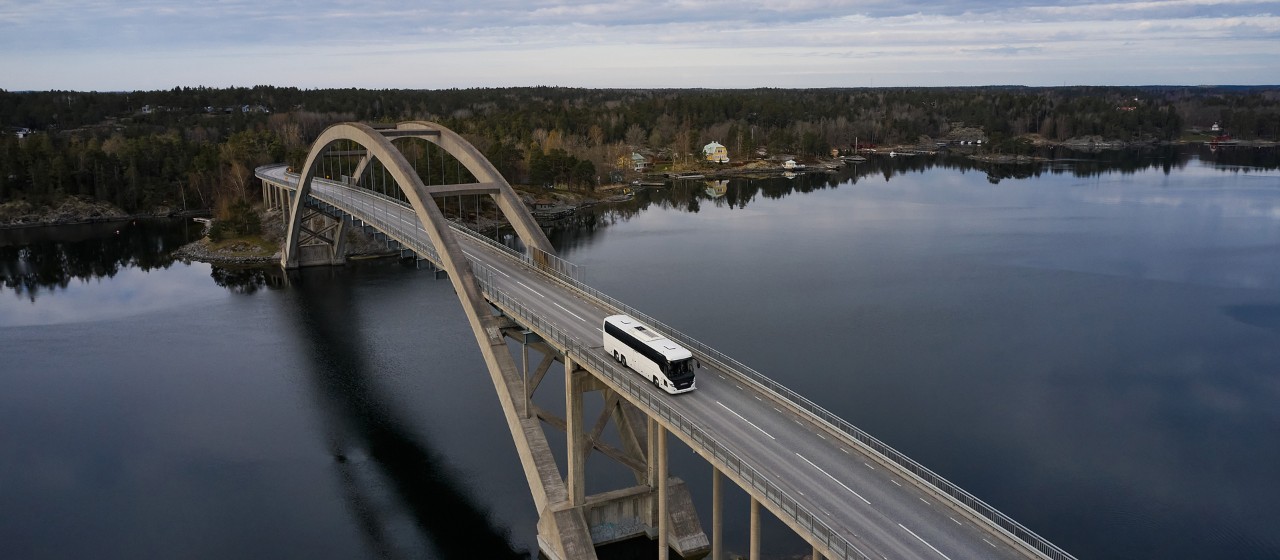
Scania Interim Report January–September 2021
01 NOVEMBER 2021
The global recovery has continued during the first nine months of the year although at a weaker growth rate in the third quarter.
Summary of the first nine months of 2021
- Net sales increased by 21 percent to SEK 107,594 m. (88,843)
- Operating income increased sharply and amounted to SEK 12,806 m. (5,249)
- Cash flow amounted to SEK 1,776 m. (3,358) in Vehicles and Services
- In the third quarter, net sales increased by 8 percent to SEK 32,818 m. (30,374) and operating income increased by 26 percent to SEK 3,073 m. (2,436).
Comments by Christian Levin, President and CEO
“The global recovery has continued during the first nine months of the year although at a weaker growth rate in the third quarter. Our customers’ transport activity remained high during the period and demand for Scania’s products and services was strong in essentially all markets.
Scania managed to keep up production for a long time and counteract unplanned stoppages caused by a shortage of components. During the third quarter, we had to eventually reduce our production volume periodically due to pandemic-related disruptions at our suppliers with consequences on our supply chain. This led to a loss of volume, mainly of trucks. The shortage of components has also caused increased costs in our supply and delivery flows. Both sales and earnings have been negatively affected by the disruptions in the third quarter. Through flexibility and an ability to quickly reduce costs, we have still managed to deliver strong earnings and a clear improvement from the comparative period in 2020, which was hard hit by the pandemic. The solution to the semiconductor shortage is still not here but we are continuing to deal with the situation through an agile production planning process and transparency in the dialogue with our customers and suppliers.
Deliveries of new vehicles have lagged but our service business has remained strong. Data from our connected vehicles shows that when new vehicles are delayed, older vehicles in the fleets are used more actively which contributes positively to the service business. During the first nine months of the year, service revenue increased by 14 percent in local currency. Financial Services reported strong earnings and our customers’ ability to pay is back at the same level as before the pandemic in most markets.
We now see a generally good level of demand for vehicles. On the truck side, this is not fully reflected in the order intake, pending the introduction of Scania’s new Euro 6 range and as a result of the current long lead times.
The business environment outlook for the future is difficult to predict with some uncertainty in the global economy. In addition, we have a continued pandemic, component shortages and political uncertainty with strained trade relations. Increasing awareness about climate risks and their consequences is also affecting sentiment. The report from the UN’s climate change panel (IPCC) came as a wake-up call from science – the strongest warning to date that we have reached a tipping point.
As part of the run-up to the COP26 climate conference in Glasgow in November, Scania has come together with other companies, organisations and governments in a series of activities to chart the way forward. Scania has for example joined The Climate Pledge and is now one of the companies that is committing to reach net zero carbon emissions – 10 years ahead of the Paris Agreement. We also participated in the discussion at the UN’s Climate Week recently and in collaboration with a number of multinational companies signed an open letter to the G20 governments.
The message is crystal clear – we need to do more to limit global warming. We can already achieve net zero carbon emissions by 2040. Heavy commercial transport is no longer a sector that is difficult to transform. We know how to reduce our emissions and we have the technology. As early as 2023, Scania’s trucks will be able to carry 40 tonnes for four hours on a 45 minute charge. Now we need to get support from decision-makers in the form of guidelines and infrastructure investments in order to realise our vision of zero emissions.”
Read the full report here.